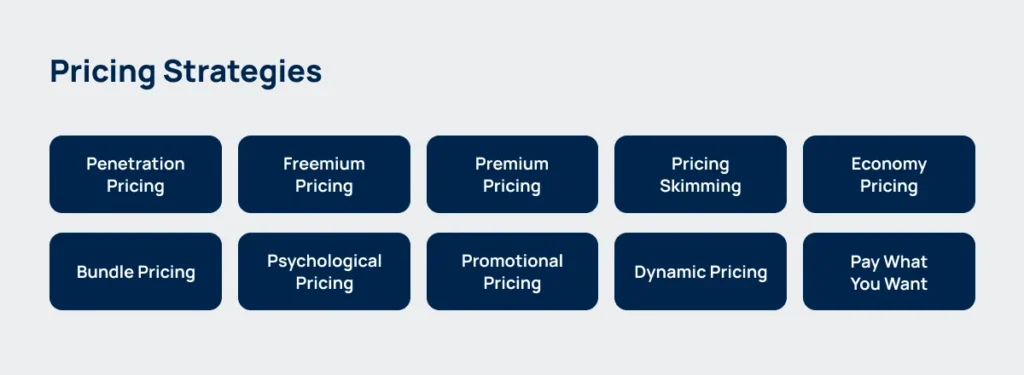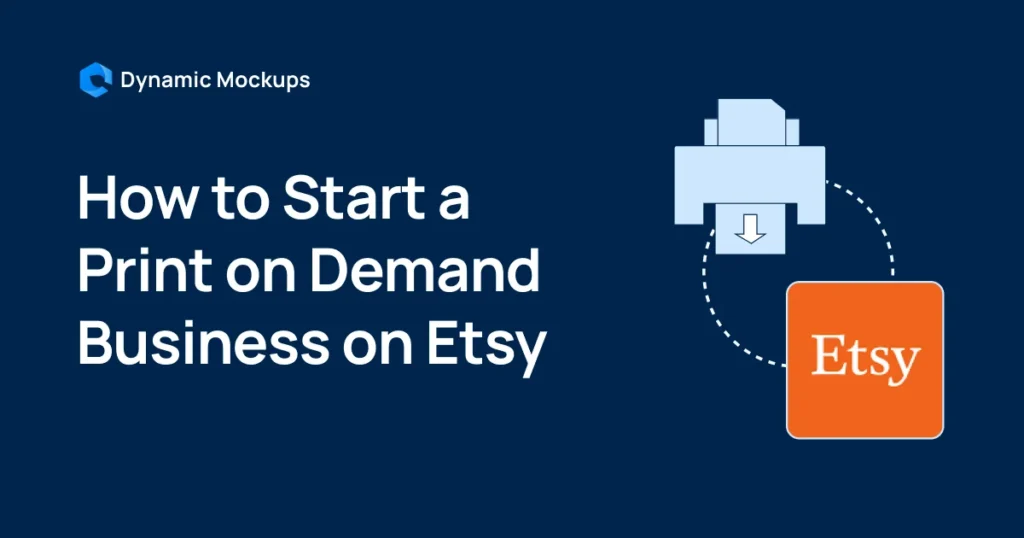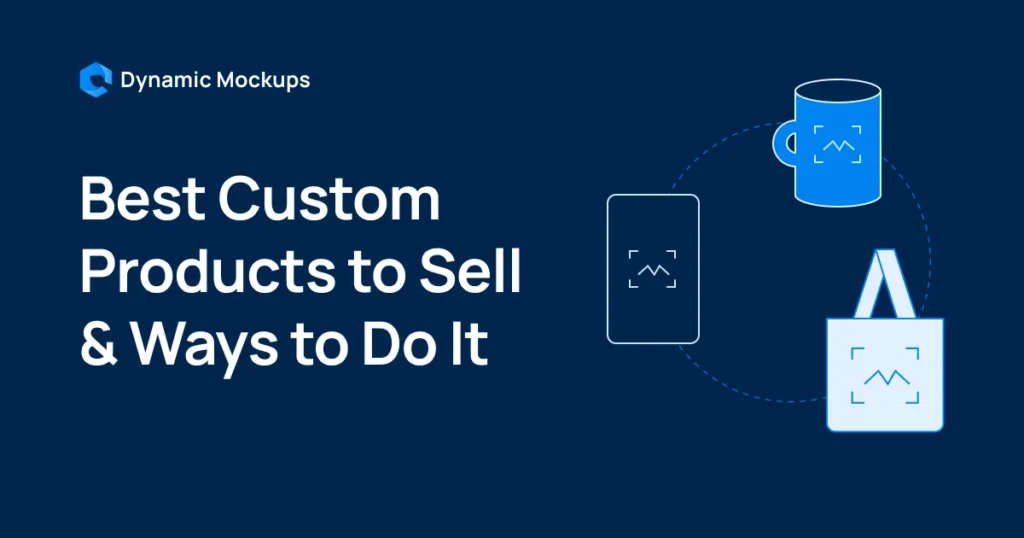With the convenience of customizable designs and the flexibility of low upfront costs, POD has become a popular business choice.
However, navigating the complexities of pricing can be daunting.
Set your prices too high, and you risk scaring away potential customers. Set them too low, and you may undermine your profit margins.
So, how do you price print-on-demand products properly? Read on as we share actionable insights to help you find that sweet spot.
Let’s dive in!
Start creating for Free!
Showcase your E-commerce products like big brands, without costing a fortune
4 Effective Strategies to Price Print-on-Demand Products
1. Understand Product Costs
You should begin by determining all costs associated with your product.
1.1. Design Costs
If you hire a designer, calculate the total amount paid and divide it by the expected number of sales.
For example, if you pay $300 for a design and expect to sell 100 units, the design cost per product is $3.
On the other hand, if you create designs yourself, factor in your time at an hourly rate.
Therefore, if you spend 10 hours designing at $20 per hour, the cost would be $200, or $2 per product if you plan to sell 100 units.

💡 ProTip:
Did you know Dynamic Mockups solves the inefficient and expensive process of manually creating mockups by automating this otherwise time-consuming endeavor?
We don’t need to tell you — For a typical store, showcasing products with different designs, colors, and sizes can amount to hundreds of mockup variations.
Thus, you can upload multiple designs and color combinations with a few clicks, and we will automatically create all mockup variations.
It takes approximately 10 seconds for 100 variations.
Imagine you sell 100 designs on T-shirts, hoodies, and mugs in 3 different colors.
That equals 900 mockup variations. With Dynamic Mockups, you can create them in well under 2 minutes.
1.2. Production Costs
These costs include the base price your POD charges for manufacturing the product.
For example, if a T-shirt costs $12 to produce, that becomes part of your base cost.
Additional costs may arise if you have multiple print locations or types, such as front and back prints, all-over print apparel, etc.
Within the same category is embroidery. Compared to standard printing, it involves higher setup costs and has additional factors that impact the price:
- Stitch Count — The complexity and density of the design determine the stitch count, which directly affects pricing. The more stitches, the higher the cost.
- Design Size — Larger embroidered designs require more materials and time, thus increasing the price.
- Thread Colors — Multiple thread colors add to production costs compared to simple, single-color embroidery.
- Product Type — Embroidery on thicker or specialty fabrics such as jackets or hats is often more expensive due to specialized equipment and handling.
Moreover, the materials you use can significantly increase the costs. For example, if you go for premium materials such as organic cotton, they typically cost more.
Another thing to pay attention to is whether your POD supplier integrates with the eCommerce platform you use.
💡 ProTip:
Did you know you can integrate Dynamic Mockups with your stack for extra functionality with WooCommerce, Etsy, Zapier, WordPress, Make, Adobe, and other powerful integrations?

1.3. Shipping Costs
Shipping costs can vary significantly based on size, weight, and destination. Most POD platforms provide shipping calculators to estimate these costs.
Again, depending on the provider, you may encounter variable or fixed rates based on the delivery speed and carrier.
Another option is to offer free shipping by incorporating shipping costs into your retail price.
The free shipping option is usually very attractive to potential customers even if the product price increases.
Thus, if you choose this option, make sure to include the rates in your product base price.
1.4. Taxes
Be aware of sales tax or VAT based on your customer’s location — You can’t predict the exact rate before you know your customer’s location.
For example, if you operate in the US, you’ll deal with the sales tax, in the EU with VAT, GST in Australia, etc.
This can vary significantly, so you should factor it into your pricing strategy.
1.5. Additional Costs
Besides the base costs, you need to consider costs such as:
- Platform fees — Any fees associated with selling platforms like Shopify or Etsy and payment processors like PayPal, for example.
Depending on the solution, you can pay a fixed monthly fee or a percentage of each sale.
- Overhead expenses — They can range from website hosting and marketing costs to any software subscriptions necessary for running your business.
💡 ProTip:
Boost your advertising with Dynamic Mockups by creating bulk designs for multiple platforms.
Therefore, you can use the visuals and advertise your products on platforms like Facebook, Instagram, Google Ads, etc.
2. Set a Profit Margin
After calculating total costs, decide on a profit margin. A common approach is to set a margin of around 20%.
Margins below 15% can be risky as they may not cover operational costs and marketing expenses, while margins above 60% can be challenging to sustain unless you offer unique or premium products.

For example, if your total cost is $20 and you want a profit margin of 40% (0.4), the calculation would be:
Selling Price: 20 divided by 1−0.4 = 20 / 0.6 =$33.33
💡 Tip:
To review competitor pricing and market trends in the POD industry regularly, use tools like Price2Spy or Google Alerts to track real-time price changes and updates from key competitors.
Furthermore, combine automated tracking with manual research by browsing popular marketplaces and engaging in POD communities on social media.
Stay updated on industry news and trends through blogs, webinars, and data analytics tools like Google Trends to ensure your pricing remains competitive and aligned with customer demand.
This way, you can adjust your profit margin based on the price similar products are selling for and the amount customers are willing to pay.
3. Apply Pricing Strategies
To effectively price your print-on-demand products, consider implementing the following strategies to maximize profits while remaining competitive.
💰 Competitive Pricing
Set your prices similar to or slightly lower than those of your competitors.
It involves researching the prices of similar products in your niche and positioning your offerings accordingly.
As a result, you can attract price-sensitive customers and maintain competitiveness.
💰 Dynamic Pricing
Adjust prices based on real-time demand. For instance, during peak seasons or for trending designs, you can increase prices to capitalize on higher demand.
Conversely, lowering prices during slower periods can help maintain sales volume.
💰 Anchor Pricing
Establish a higher initial price and then offer discounts to create a perception of value.
For example, show a high-priced item first to make lower prices look more appealing. Let’s say you showcase a premium jacket at $300 next to one at $150.
This strategy makes the discounted price appear more attractive, encouraging customers to purchase.
💰 Discount Pricing
Offer temporary discounts or promotions to stimulate sales and draw in new customers. It is a good strategy to boost brand awareness but requires careful planning to ensure profitability.

💰 Bundling Products
Combine multiple products into a bundle at a reduced rate compared to purchasing each item separately.
In addition to encouraging larger purchases, you also leave customers with a sense of saving some money and, therefore, enhancing their shopping experience.
💰 Penetration Pricing
Introduce new products at lower prices to quickly gain market share.
Once established, you can gradually increase prices as customer loyalty builds and brand recognition grows.
💰 Skimming Pricing
Start with a high price when launching a new product and gradually reduce it over time as demand decreases.
Thus, you can maximize profits from early adopters before adjusting for broader market appeal.
💰 Value-Added Pricing
Differentiate your products by adding unique features or services that justify a higher price point.
This could include:
- Personalized designs,
- Premium materials or
- Exceptional customer service which can attract customers willing to pay more for perceived value.
Choosing the right pricing strategy for your print-on-demand products involves understanding your costs, market dynamics, and customer expectations.
4. Do Periodic Reviews
Regularly reviewing and adjusting your pricing strategy based on sales performance, customer feedback, and market trends is essential for long-term success in the POD business.
🎁 Bonus: 7 Common Pricing Mistakes to Avoid
1. Overpricing Products
Setting prices too high can deter potential customers. Many of your fellow POD entrepreneurs mistakenly believe higher prices will increase profits.
However, this often backfires, especially in competitive markets.
Customers are likely to choose cheaper alternatives if they perceive your products as overpriced compared to similar offerings.
2. Underpricing Products
Conversely, pricing your products too low can lead to unsustainable business practices.
Imagine you’re selling custom T-shirts at $10 each, with a production cost of $7. Although the low price may initially attract more customers, your profit margin is only $3 per shirt.
When you account for additional expenses like marketing, transaction fees, and shipping, you end up with little to no profit.
Thus, the pricing strategy isn’t sustainable in the long run because it leaves no room for reinvestment or handling unexpected costs.
Consequently, you’ll either have to raise prices and perhaps lose customers or cut back on quality, which will hurt your brand reputation.
While lower prices may attract initial sales, they can jeopardize your profit margins and make it challenging to cover production and operational costs.
Ensure that your pricing reflects the value of your product while still appealing to your target market.
3. Ignoring Production and Shipping Costs
When setting prices, it is a common mistake to fail to account for all associated costs, such as production, shipping, and taxes.
Consequently, this oversight can lead to unexpected losses.
To avoid this, always calculate the total cost of bringing your product to market and ensure that your selling price adequately covers these expenses.

4. Neglecting Market Research
Not keeping up with market trends and competitor pricing can result in missed opportunities or misaligned pricing strategies.
Regularly analyze competitor prices and market conditions to adjust your pricing accordingly to stay competitive and responsive to changes in consumer demand.
5. Not Considering Psychological Pricing Tactics
✨ Charm Pricing
The strategy involves ending prices with 9s or odd numbers, such as $9.99 instead of $10.
The idea behind it is that customers perceive these prices as significantly lower than a rounded figure, even though the difference is just a penny.
The base for this lies in the psychology of the “left-digit effect.”
When reading prices, customers focus on the first number on the left.
Therefore, while $9.99 and $10.00 are almost identical, $9.99 seems to be in the “$9 range,” which feels noticeably cheaper.
Charm pricing is particularly effective for items customers are price-sensitive about or for mass-market products where minor differences can drive impulse buys.
You can see a lot of this technique in retail, supermarkets, and fast-moving consumer goods.
✨ BOGO and Discount Strategies
Techniques like “Buy One, Get One” or BOGO, “Save 50%,” or “Get 3 for $10” make customers feel they’re getting more value.
Customers respond more positively to promotions that clearly frame the savings or bonus.
For example, saying “Buy 2 and Save $10” is more effective than simply discounting $10 off the total.
You might sell a single tote bag for $15 or offer a deal of “Buy 2 for $25.”
Even though the second option requires spending more in total, the lower per-unit price of $12.50 vs. $15 makes customers perceive it as a better value.
6. Failing to Test Pricing Strategies
Another common mistake is to stick with a single pricing strategy without testing its effectiveness.
Implementing A/B testing or experimenting with different price points can provide valuable insights into what resonates best with your audience.
For example, you can create two identical product listings but set Listing A at $39.99 and Listing B at $44.99.
Then, you track which listing generates more sales and observe customer behavior, such as cart abandonment rates over 2 weeks.
If Listing B performs better, it suggests customers are willing to pay the higher price, and you might standardize this price for future sales.
Conversely, if Listing A has a much higher conversion rate, it indicates that the lower price point is more appealing and may drive higher overall revenue.
As a result, adjusting prices based on data-driven results can enhance sales performance significantly.
7. Lack of Periodic Reviews
Pricing is not a one-time decision — it requires regular evaluation.
Failing to review your pricing strategy periodically can lead to stagnation or missed chances for improvement.
You should set a schedule for reviewing your prices based on sales trends, customer feedback, and market changes.
To Sum Up: How to Price Your Print on Demand Products Effectively?
By understanding your costs, setting a competitive profit margin, and regularly monitoring market trends, you can create a pricing strategy that attracts customers and ensures profitability.
Remember that pricing is not a one-time decision but requires ongoing evaluation and adjustment as your business grows and market conditions change.
With the right approach, you can find that perfect balance between value and profit, positioning your POD products for long-term success.
How to be More Price-Effective With Dynamic Mockups?
Dynamic Mockups is a robust mockup generator that exceeds the creation of mockups. In addition, it provides solutions and tools to:
- Further customize your designs,
- Elevate your online presence and
- Boost your marketing efforts at a fraction of the cost and time.
So, how can we help you save money?
✨ Bulk create mockup — 100 designs in 10 seconds.
✨ Create scenes that resonate with your target audience with our latest AI mockup feature.
Thus, you can easily switch up your scenes without changing your original designs and test different looks to see what gets the most engagement without losing your original work.
✨ Customize designs even more thanks to our API, which allows you to upload Photoshop mockups to our platform and automatically create mockups.
✨ Browse our ever-growing library with mockups, including T-shirts, Hoodies, Sweatshirts, Wall art, Pillows, Mugs, Pillows, Blankets, Tote Bags, Phone Cases, etc.
✨ And so much more.
🔔 Stay Tuned:
We’re about to release a tool that will enable you to embed our mockup editor into your website and create mockups without using third-party platforms.
Join our Dynamic Mockups family for free and start cutting design costs in no time.
Start creating for Free!
Showcase your E-commerce products like big brands, without costing a fortune
Keep Learning:
8 Print-on-Demand Strategies To Grow Quickly


